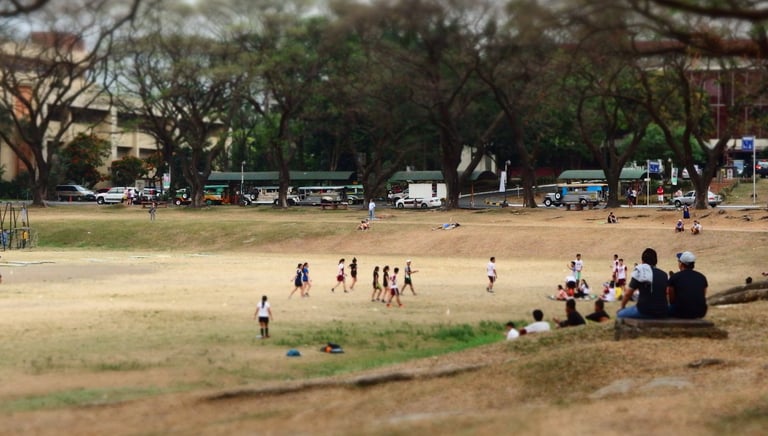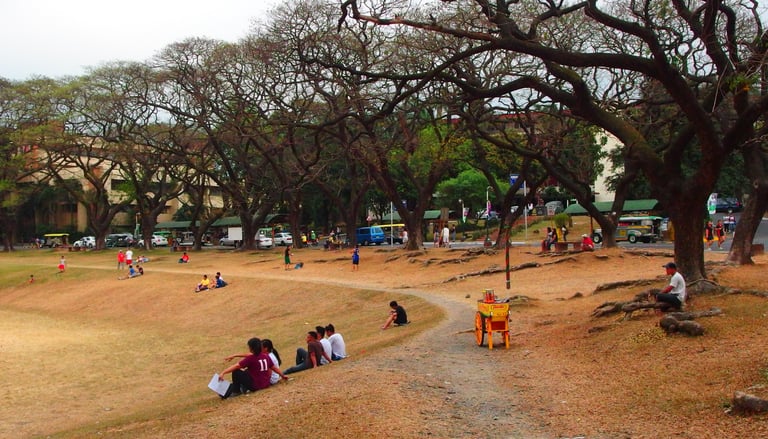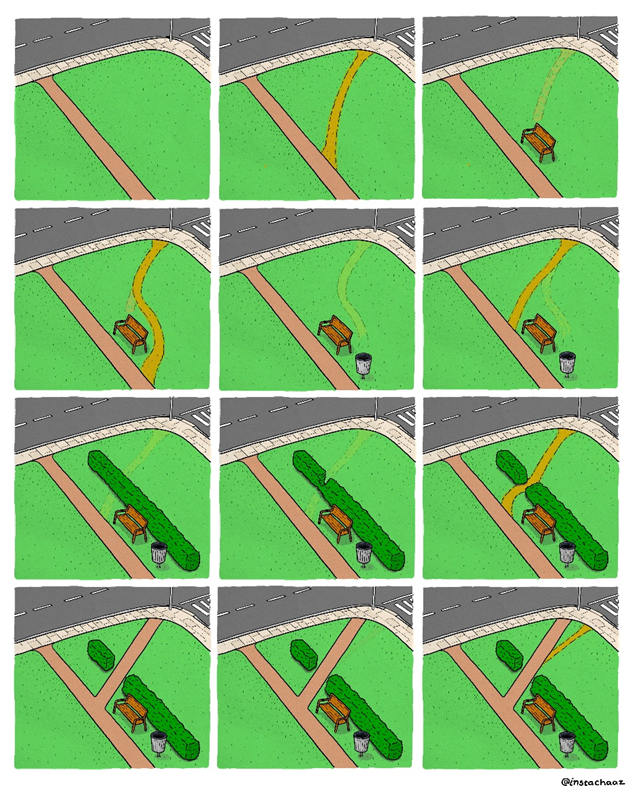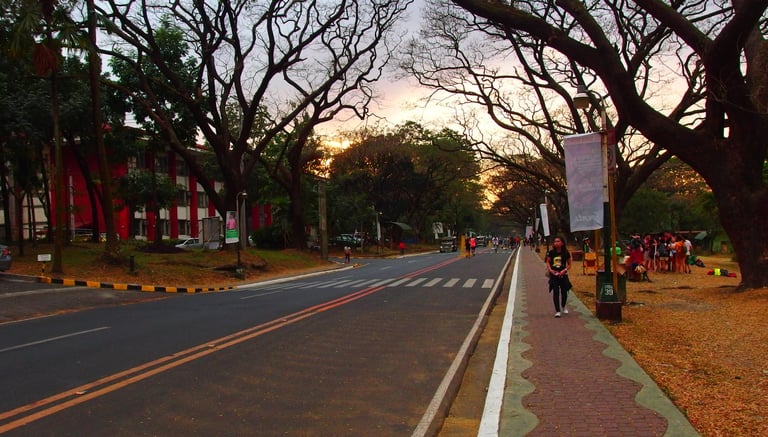Desire Paths: Understanding How They Affect Design
Desire paths occur when people take the route not planned in the design. It's not generally a lack of foresight in the side of the designer, but knowing the desires of the end-user can greatly help in making better plans in the drawing stage.
SPACE
Richard Lasam
3/11/20254 min read


In the university I attended, there is a place that everyone calls the “Sunken Garden,” a wide green space in which school fairs, sports events, concerts, and weekend family fun happen. Despite its name, it is not a garden, but it is most definitely sunken. It is called the General Antonio Luna Parade Grounds, but due to the presence of a geological fault line there, the grounds have ever so slowly sunk over the decades.
After 70 years, the depression of the parade grounds became so obvious that it was soon unofficially called the Sunken Garden, and the name stuck ever since. Such green spaces dotted my school, the Diliman Campus of the University of the Philippines, located in Quezon City. In fact, the university is one of the last true green spaces within the urban sprawl of Metro Manila. As such, students are encouraged to walk from one building to another to reach their classes. While there are public vehicles available to bring students to the farthest college buildings and some students drive around with their cares, walking is still the general mode of transportation within the campus. The campus is littered with informal walking trails that students have walked on for decades, creating a literal physical output of the end users in the school grounds.


This phenomenon has a name; “desire paths” or the compunction of people to find a more convenient pathway that often defies the intended physical design of the planners of a space. A formal definition is as follows:
“The term ‘desire path’ was coined by French scientist, philosopher and poet Gaston Bachelard in his 1958 book La Poétique de l’Éspace (or ‘The Poetics of Space’). He described them as paths ‘created by usage’ which pedestrians have taken to get ‘from point A to point B more quickly than the predetermined paths (like sidewalks) that have been put in place.’" – The twists and turns of ‘desire paths’
One of the more prominent of these informal trails are in The Sunken Garden; the perimeter of the green space has a proper sidewalk that people should be walking in; but you can see a distinct trail of bare soil in the sloped areas of the place. Generations of students have carved out a path that is more convenient and faster to travel than the intended sidewalk. But why? Apparently, this has been a question that designers and psychologists have pondered on since the action of creating desire paths is a common occurrence in universities and major pedestrian areas that have an open field.


The desire path of the Sunken Garden. Note the sidewalk is also used, but the desire path is so established that it is devoid of grass.
This comic by Chaz Hutton explains humorously how desire paths form over time:


But why do desire paths form in the first place? While research keeps on going and studies are being done all the time, most researchers have landed on three general reasons such desire paths form:
1. Following the path of least resistance. The most obvious reason is the desire path is a shorter route towards an intended destination. Like the one in the Sunken Garden, the sidewalk has a lot more travel distance than taking the smaller desire path that walks in the grassy area of the green space. Generally, most desire paths are formed because of the simple reason that it is faster to get to the destination by this route.
2. The want for a walk in more natural surroundings. Sometimes, desire paths form due to the want of a “scenic route”—people prefer to have a walk in a greener, more natural environment than the concrete sidewalk. Desire paths, then, may be a form of a longing for the great outdoors, but in a more pedestrian and less dangerous aspect.


It may just be a plain rejection of the road and the preference of being in nature that desire paths are formed.
3. To defy the intended movement path. Another suggestion is that it’s a subconscious need for some students to just… do something else. If not due to a shorter path or a more visually appealing route, some desire paths seem to form over generations of just plain defiance of what the intended direction of travel is.
At the end of the day, I feel that these desire paths is a subconscious way that people decide on how the physical environment should be adjusted to the needs of the many, regardless of how one designs the space. This is not for a lack of foresight from an architect, but more of the need to watch a space over significant time periods to really understand how a space should be planned. One therefore, needs to merge the analysis of the designer and the desire of the end-users of the space.
If you want to read more about desire paths, you can also visit these other articles I found:
Desire Paths: The unofficial footpaths that frustrate, captivate campus planners
